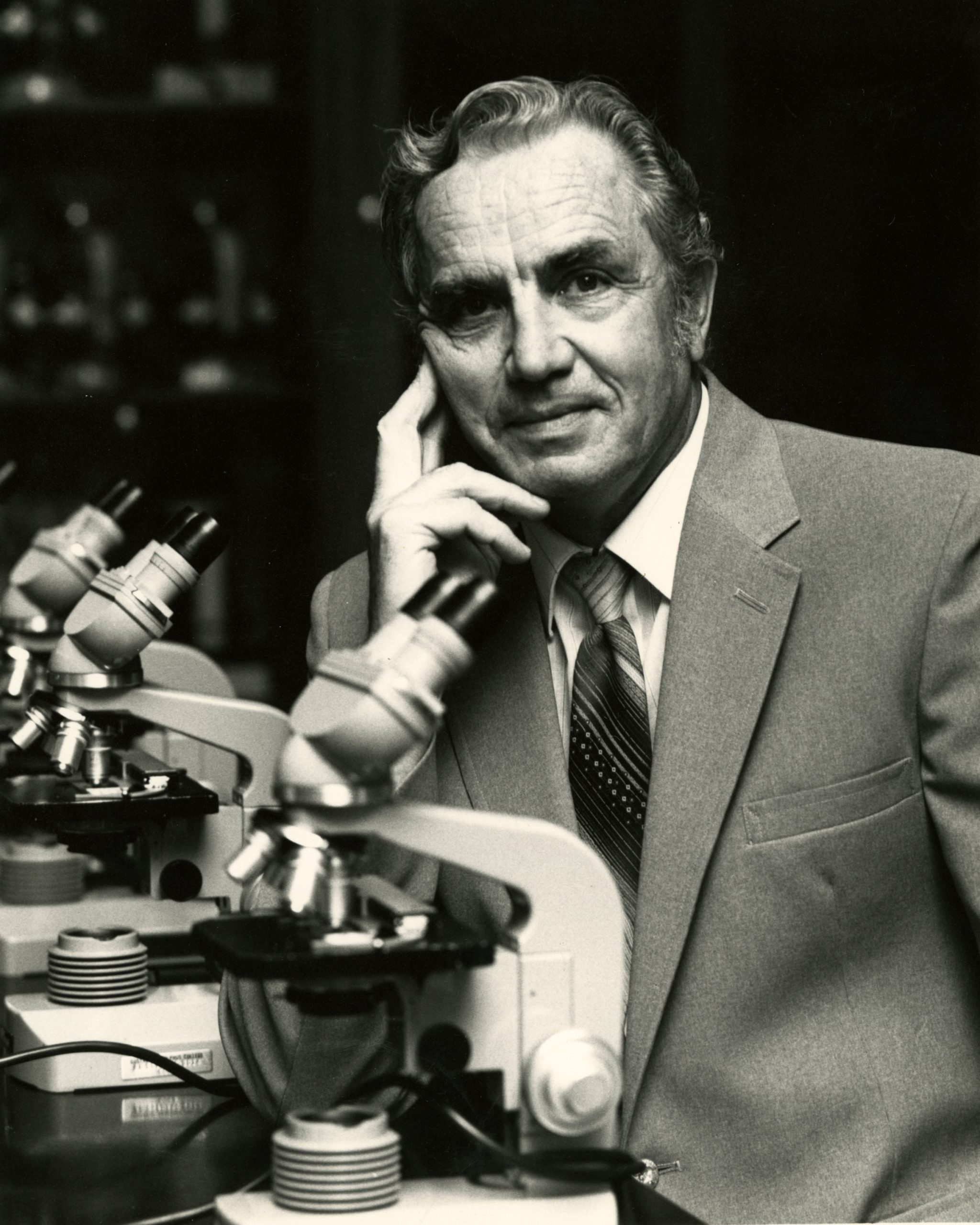The Edgar M. Carlson Award for Innovative Teaching was established by the Board of Trustees of Gustavus Adolphus College to honor the long and outstanding period of leadership that Dr. Carlson gave this college. Each year the award is given to a member of the faculty in recognition of teaching excellence. The recipient is selected on the basis of nominations and support from the Gustavus community. This year the award goes to Professor Arthur W. Glass of the Biology Department.
“Doc Glass,” as he is known affectionately by generations of students and colleagues, is uniquely “Gustavian.” Raised on the edge of the campus, he knew the college intimately long before matriculating as a freshman in 1939. He graduated with a biology major in 1943. As was the custom in those years, he then enlisted in the defense of his country. After serving with distinction in the Okinawa campaign with the Marine Corps, Captain Glass returned home and resumed his studies in biology at the University of Minnesota. In 1950, with a Ph.D. in genetics in hand, he returned to Gustavus.
I have heard Arthur Glass’s teaching referred to as the “Glass Treatment,” That it constitutes excellence and dedication in teaching would be most difficult to dispute. Alumni, parents, students – even prospective students – seek him out. One student nominator wrote, “He has dedicated his life to the students of GAC both in and out of the classroom. He is a men tor to those who are willing to listen and a friend to those who need counsel.” That is an important part of the “Glass Treatment.”
But the Carlson Award specifically designates innovative teaching as the fundamental ingredient for excellence. Allow me to cite just a few of the salient innovations used in the “Glass Treatment.” I think you will detect a basic underlying principle in his approach. He treasures independent thought and independent thinking.
When Dr. Glass began his teaching at Gustavus, Comparative Anatomy was universally studied in the undergraduate laboratory with pickled cats. He recognized the ready availability of fetal pigs. Meat packers would give them away for the taking. He recognized that the anatomy of a fetal pig compared nicely with human anatomy. Enlisting his friend and col league Charles Hamrum, the Comparative Anatomy course was redesigned, and their beautifully illustrated laboratory manual based on the fetal pig caught on and sold nationally through several editions.
It was Dr. Glass who introduced and developed the Steroscopic Anatomy course – a detailed sequence of self-study exercises that no Gustavus Pre-Med fails to take before confronting the MCAT’s. This course puts human anatomy in perspective without the need for cadavers.
It was Dr. Glass who experimented with and developed duplication procedures that provided his students with multicolored illustrations back in the pre-audio visual days when one mimeograph machine served the entire college.
Even now, Arthur is systematically expanding an already bulging supply of literature search projects called variously “Reading for Fun,” “Reading for Self-Edification” or “Forced Reading” – depending upon the immediate frame of mind. These programmed study materials are truly unique in that they are designed to promote critical and effective library research and scientific reading comprehension.
Other Glass innovations include the development of computer learning programs in Biocalculus, the development of clock-face study materials in genetics for blind students, and the development of a unique multiphasic pretest on lesson materials. Even his special objective tests evoke wonder and admiration. No less a student and scholar than Dr. Keith Garlid once told me that the “Glass Objective Test” was a professorial masterpiece.
Arthur designed the biology wing of Nobel Hail of Science and served on the committee that planned and arranged the first Nobel Conference. He was on the committee that pioneered the 4-1-4 curriculum reorganization that subsequently caught on across the country. He received awards from the Alumni Association for being an outstanding Class Agent. He has coached varsity hockey. He taught square dancing in the Physical Education Department for 15 years, and did you ever see his puppet show?
Art -we are honored to count you as our professor and colleague. It is with great pleasure that we present you the Edgar M. Carlson Award for 1985.
Presented by Arne Langsjoen
Professor of Chemistry
1977 Recipient of the Edgar M. Carlson Award

Leave a Reply
You must be logged in to post a comment.